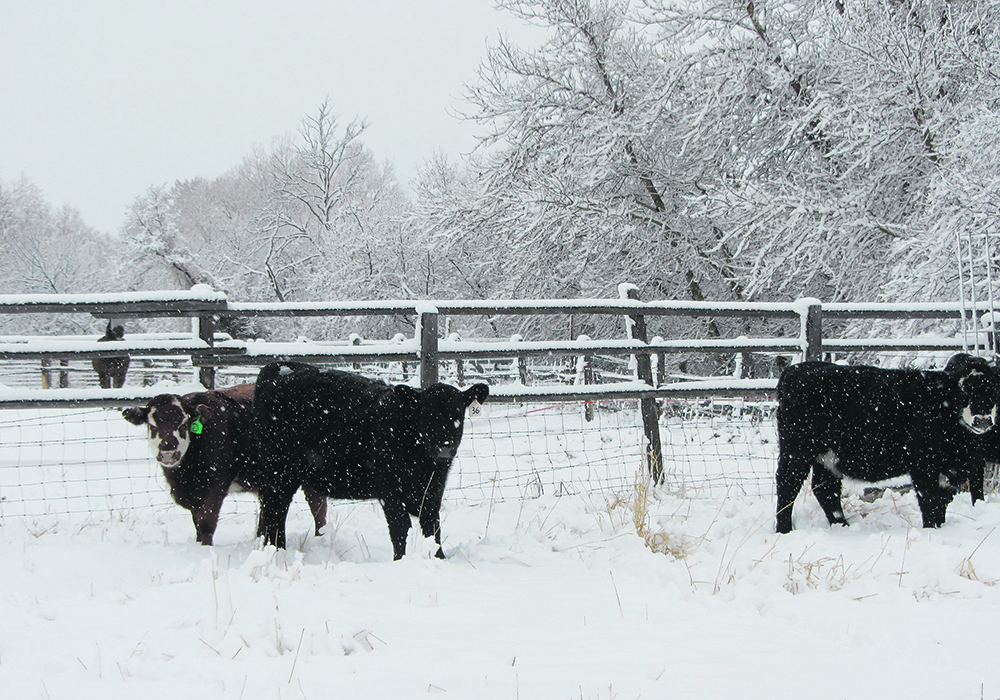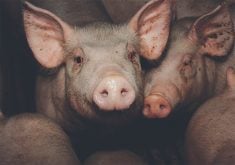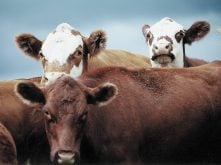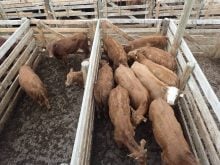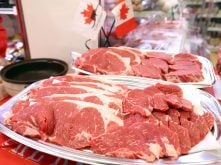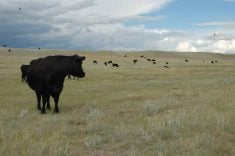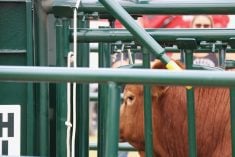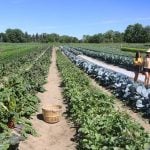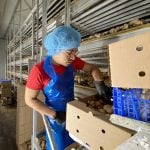Producers are urged to monitor cattle feed quality, but providing protection from the wind is also an important factor
Cattle grow longer, thicker hair and put on a layer of fat to provide insulation and reduce heat loss as cold weather arrives. Increased metabolism and higher feed requirements help increase heat production so cattle withstand winter temperatures.
However, cold stress can still be a factor, and management to minimize it will reduce risk of cattle illness.
Dr. Bart Lardner, animal and poultry sciences professor at the University of Saskatchewan, says producers should pay attention to feed ingredients for the herd. “This is a year you definitely want to test your feeds, especially with the challenge of using novel feed sources when hay is scarce and expensive. Many producers are trying to find alternate fibre sources,” he says.
“Monitor condition of cows going into a winter feed program. They need to be in moderate body condition, about score three on the scale from one to five. You want to maintain that condition through winter and up to calving.
“Cold stress necessitates supplemental energy sources such as grains or byproduct feeds like screenings, oat hulls, dried distiller’s grains, and maybe some alfalfa hay.”
Cattle tend to increase intake to meet their energy needs.
“With cold weather their intake may increase as much as 30 percent so you need to be able to supply that extra feed,” Lardner says.
They also need more protein to feed rumen microbes that break down fibrous feeds.
“Whenever the protein level in forage drops below six percent, cattle need a protein supplement. Then they can digest and convert that fibre to usable energy. Structural carbohydrates are a good source of energy if the cattle have adequate protein to process the fibre,” he says.
He advises feeding more energy for every one degree drop below zero.
“For example, when the temperature is – 20 C, cows need two pounds extra energy in the feed. Minus 30 degrees would require four lb. of extra energy,” says Lardner.
Poor quality hay is mostly fibre so cows might not be able to eat enough to maintain weight and keep warm.

Protein supplements, whether legume forage, cereal grains, canola meal, byproducts or commercial pellets, are expensive so shopping around is necessary.
Wind is the big factor in cold stress.
“Ambient temperature might be -20 C but if there’s no wind the cattle can do quite well if they have good body condition,” says Lardner. “With wind, however, they lose body heat.”
Strong wind separates hairs in the hair coat and it loses insulating quality. If cattle are wet, they also lose the insulating effect of hair. Wet cold is more stressful than dry cold. Windbreaks are needed for cattle on pasture or winter range, whether natural treed areas or permanent or portable structures.
Water is another important item in winter. If cattle are eating more feed to maintain body condition in winter, they also need more water to facilitate digestion.
“Your water source should be something that won’t freeze. It might be an insulated water trough or a wet well coming from a dugout or fenced-off pond. We don’t want to be chopping ice or have cattle walking out on ice trying to drink,” Lardner says.
There are many horror stories of cattle falling through ice on a pond or dugout.
Cattle can eat snow, but that is learned behavior and only works if there is adequate snow that’s not crusted.
A mature cow in good body condition can withstand more cold than a smaller, younger animal. The latter has higher protein and energy requirements but lower body mass.
“When I see snow on the back of a cow, I know she has a good fat cover. With fat cover and good hair coat, she doesn’t have much heat loss; the snow is not melting,” says Lardner.
“Cattle in an open field with no windbreaks … have to burn fat reserves to stay warm. We’ve measured their rib and rump fat reserves with ultrasound and they may go from a nice 15-millimetre fat cover down to six mm. If they don’t get enough energy from diet, they have to mobilize fat to create body heat.”
Thin cows may have more trouble calving, may have poor colostrum quality and might not rebreed, so it is important to maintain their winter body condition. It takes more feed to keep a thin cow warm so it’s easier to maintain a cow that’s in good body condition.
“Manage and monitor as you go through winter,” says Lardner. “There are many systems for wintering cattle — dry-lot feeding, field feeding, windrow grazing, bale grazing or corn grazing. Cornstalks can act as a windbreak as well as a feed source.”
A good mineral program plus adequate energy and protein are important.
“Some alternative feed sources or even slough hay or kochia hay may not provide enough of certain important elements of diet. Pay attention to the calcium-phosphorus ratio. Some people are feeding ditch hay because that’s all they have this year, and they need to balance this with supplemental minerals and vitamin A if the forage was dry and mature.”

